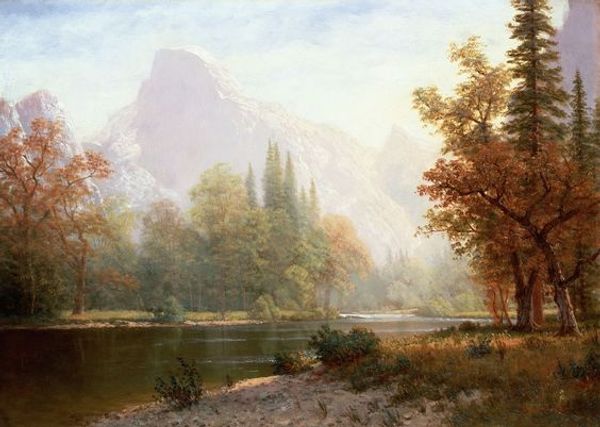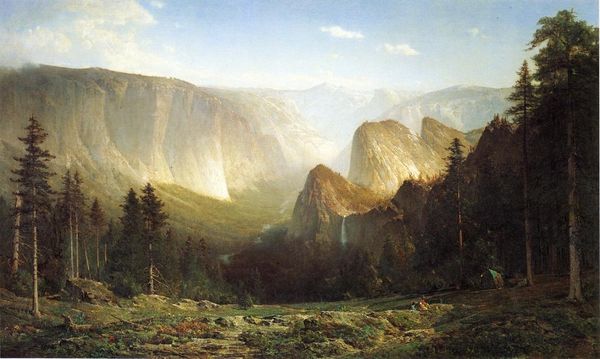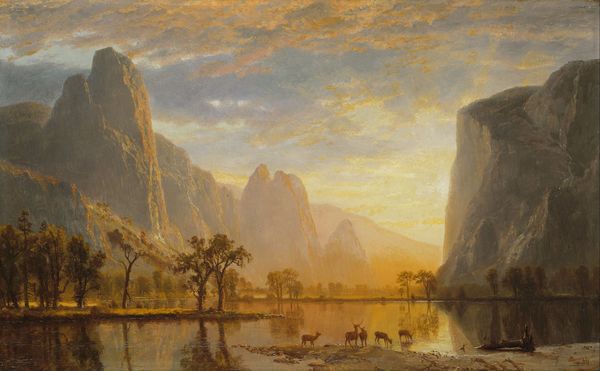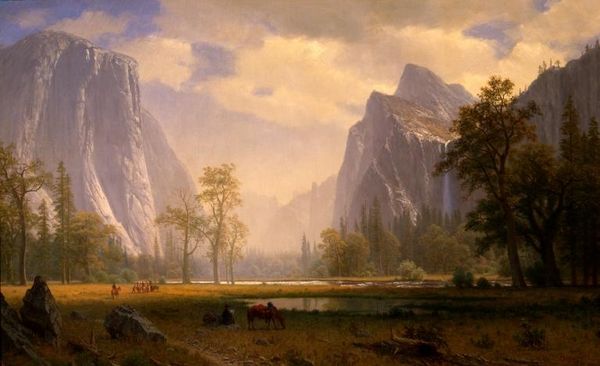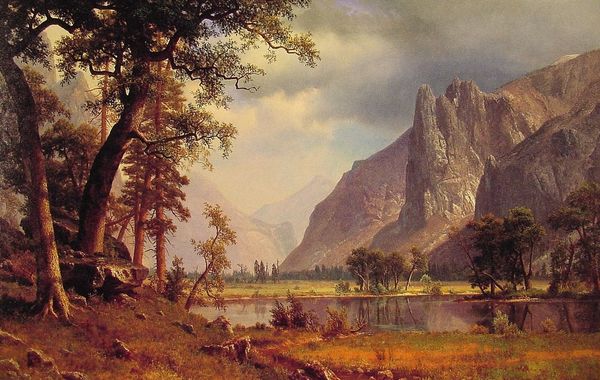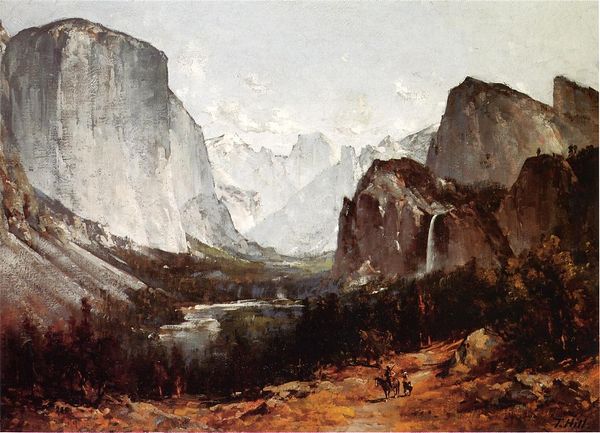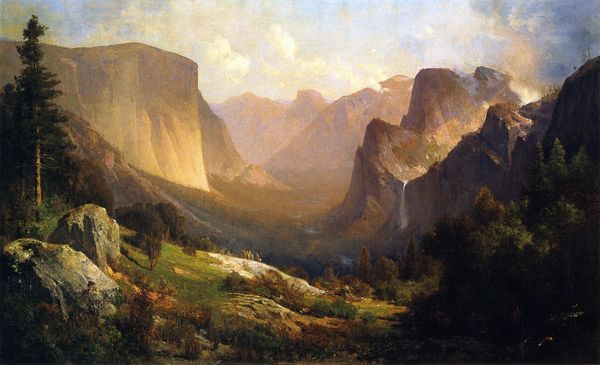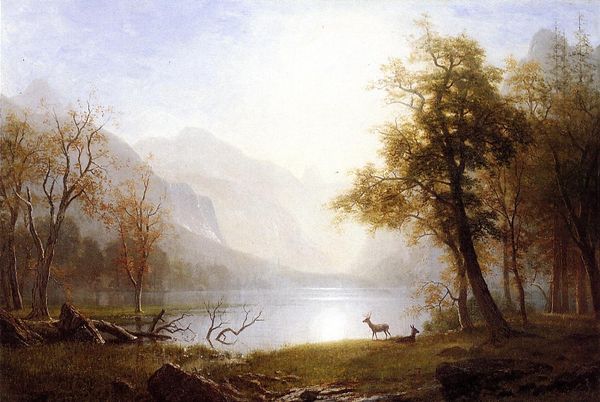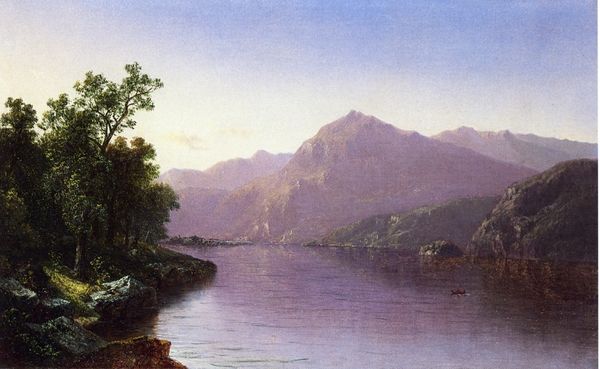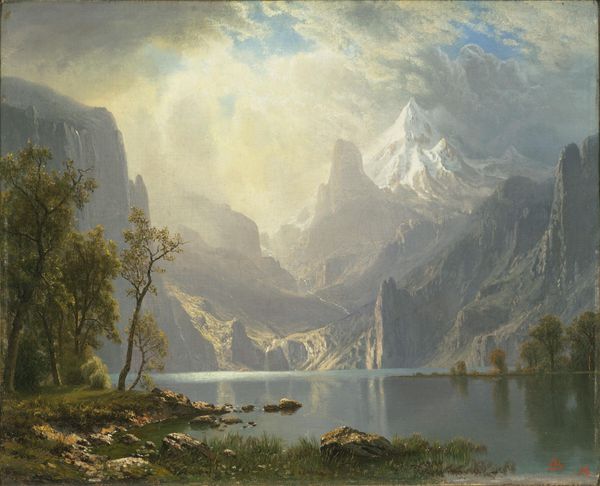
painting, plein-air, oil-paint, impasto
#
tree
#
mother nature
#
painting
#
plein-air
#
oil-paint
#
landscape
#
waterfall
#
river
#
impressionist landscape
#
impasto
#
mountain
#
natural-landscape
#
hudson-river-school
#
fog
#
water
#
realism
#
mist
Dimensions: 81.7 x 122.2 cm
Copyright: Public domain
Curator: Standing before us is Albert Bierstadt’s “El Capitan, Yosemite Valley,” painted in 1875. It’s a fairly large canvas, showcasing the majestic Yosemite landscape. Editor: It has such a soft, almost ethereal quality to it. The way the light filters through the mist is quite captivating. Curator: Indeed. Bierstadt, known for his grandiose depictions of the American West, often exaggerated the scale to inspire awe. What's intriguing to me is how the image circulated through mass reproductions shaping the understanding and appreciation of landscape in America and elsewhere. This, in turn, contributed to the preservation of these sites. Editor: I agree, but it's equally compelling to examine Bierstadt’s methods. Look closely at the surface; see how he builds layers of oil paint, creating texture and depth, especially in the foliage and rocks. The labor, from procuring pigments to meticulously applying them, shouldn’t be dismissed. Where were his paints manufactured, how were the brushes constructed? Even the canvas preparation itself, a craft of stretching and priming the linen, added a cost to the process and an interesting factor to unpack in terms of resources and labor division at that time. Curator: That’s a valid point, highlighting the material investment in producing these idealized scenes. There is some historical evidence showing he used photographs and plein-air sketches for preparatory study. This painting’s place within a complex economic system demonstrates how artistic production is deeply embedded in a network of exchange. Editor: Right, and it makes you wonder about the accessibility of such art back then. Were these landscapes solely enjoyed by the elite, further cementing their status through ownership of romanticized wilderness views, or was access broadened through publications or display? Curator: The market around art always reflects social hierarchies, yet it's through institutional collections and public access that the conversations broaden and democratize our relationship to the past. Bierstadt clearly wanted to connect to that growing art audience. Editor: Ultimately, though, it remains a compelling image, sparking conversation about the many layers – both literal and metaphorical – within the artistic process and the role art has in reflecting our social context. Curator: I think both are central here: the awe the landscape inspires and the socio-political background informing its production and consumption. Thank you for giving the time to consider it all.
Comments
No comments
Be the first to comment and join the conversation on the ultimate creative platform.
